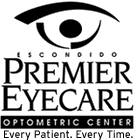
Keratoconus: What Is It?
Keratoconus is an eye condition that gets progressively worse over time. It causes the cornea to become thin and weak, and bulge into a cone-like shape. The condition affects about 1 in every 2,000 people.
The cornea is the clear outer covering of the eye. It allows incoming light to focus on the retina, which results in clear vision.
However, with keratoconus, the cone-shaped cornea changes how light is focused. So people with keratoconus develop astigmatism and myopia (nearsightedness), which cause distorted and blurry vision.
Left untreated, keratoconus can result in damage to the cornea and permanent vision loss.
Causes of Keratoconus
When an individual has keratoconus, the collagen fibers that support the cornea become weak. Having a family history of keratoconus is a high-risk factor, but other factors can lead to keratoconus, such as:
- Trauma to the eye
- Eye allergies
- Excessive eye rubbing
- Various eye diseases
- Marfan syndrome
- Ehlers-Danlos syndrome
- Down syndrome
- Osteogenesis imperfecta
- Addison’s disease
- Leber’s congenital amaurosis
Common Keratoconus Symptoms:
Some of the most common symptoms of keratoconus are:
- Blurry vision
- Distorted vision that causes straight lines to look wavy or bent
- Sensitivity to light and glare
- Irritated, red eyes
- Increasing difficulty wearing standard contact lenses
Keratoconus is usually first diagnosed during an individual’s teen years or early adulthood. However, the symptoms can develop at any age.
They usually begin as mild symptoms and progressively worsen for a decade or two, after which the condition plateaus.
Both eyes are usually affected, and it’s common to have a difference in optical prescriptions between each eye.
How Does Keratoconus Affect Vision?
Astigmatism, nearsightedness, and visual distortions worsen as the condition progresses. Ultimately, the corneal swelling caused by keratoconus causes the corneal tissue to scar, which impacts its transparency and increases the likelihood of permanent vision loss.
This is why early diagnosis and treatment are key for preserving vision.
Is Keratoconus Treatable?
When first diagnosed with keratoconus, symptoms like blurry and distorted vision can be corrected using custom-fit soft contact lenses or eyeglasses. But as the condition progresses and the cornea becomes more misshapen, these traditional methods of correction may no longer be effective.
Scleral lenses are a non-surgical yet effective way to correct vision in patients with mild to moderate keratoconus. In severe cases, a patient may need a corneal transplant, which involves replacing a damaged cornea with a healthy donor cornea.
Scleral Lenses: What They Are and How They Work
Scleral lenses, or rigid gas permeable RGP contact lenses, are customized for people with irregularly shaped corneas.
They’re specialized lenses, and much larger than regular lenses, which allows them to easily cover sensitive corneal tissue and rest on the sclera - the whites of the eye. Scleral lenses also retain moisture between the cornea and the back of the lens, so are a popular choice for people with dry eye syndrome.
Get Scleral Lenses in Escondido
Keratoconus doesn’t have to affect your life negatively. We’re eager to help you achieve clear, comfortable vision with scleral contact lenses.
Call Escondido Premier Eyecare's Scleral Contact Lens Center in Escondido to schedule a scleral lens consultation if you or someone close to you has keratoconus.
Our practice serves patients from Escondido, San Marcos, North County, and San Diego, California and surrounding communities.


*Closed daily for lunch between 1pm to 2pm